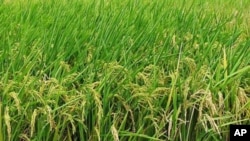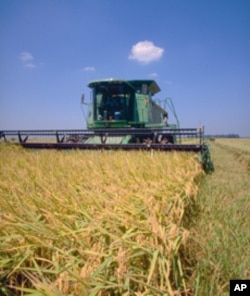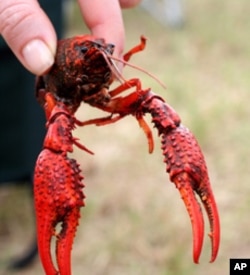Since Louisiana leads the United States in the production of rice, a lot of people wonder whether the oil that has spread into the state's marshes from the gushing spill offshore will threaten this year's crop.
So far, the answer is no. Even though some of Louisiana's quarter-million hectares of rice farms are located within shouting distance of bespoiled marshes, rice ponds rely on fresh water from wells and rainfall - not saltwater that, even without oil, would kill tender plants.
The ponds' earthen banks are also home to finger-sized shellfish called crawfish. And these mudbugs, as some call them, are about to become an even more important part of the region's seafood platters now that shrimp, oyster, and crab harvesting has been shut down in affected areas of the Gulf of Mexico.
From the air, much of South Louisiana still looks like a quilt dotted with picture frames. The frames are levees that hold in the water for paddies in which rice is grown. And it's from low-flying airplanes each spring that pilots sow the rice crop by tossing seeds from 900-kilo bags into the wind. The farmers call it flying the seeds.
In a dry spell, saltwater from the Gulf of Mexico can seep into Louisiana's aquifers. So far, though, the oil hasn't reached very far inland, and saltwater has not seeped into the farmers' wells.
A rich harvest is by no means assured, however.
Troublesome red rice shoots can appear amid the preferred white rice. Piglet-sized rats called nutria can gnaw levee tunnels that drain entire rice fields overnight.
Blackbirds by the thousands can descend and devour newly dropped seeds. Raccoons can turn over traps and eat every crawfish inside. A drought can begin at any moment. And low prices brought on by foreign competition can make the whole enterprise unprofitable.
In short, the Gulf oil spill might be the least of Louisiana rice farmers' worries right now.










